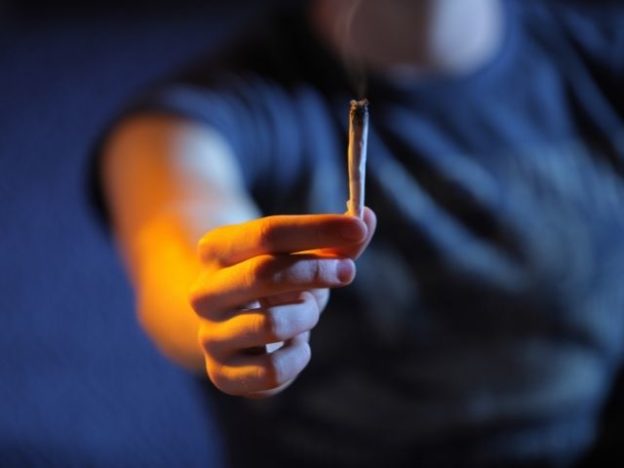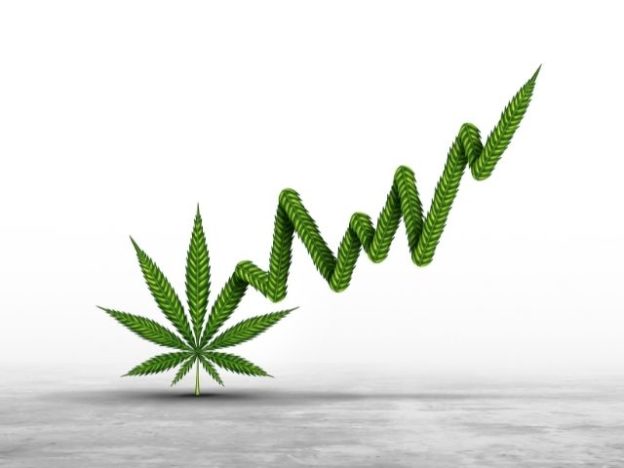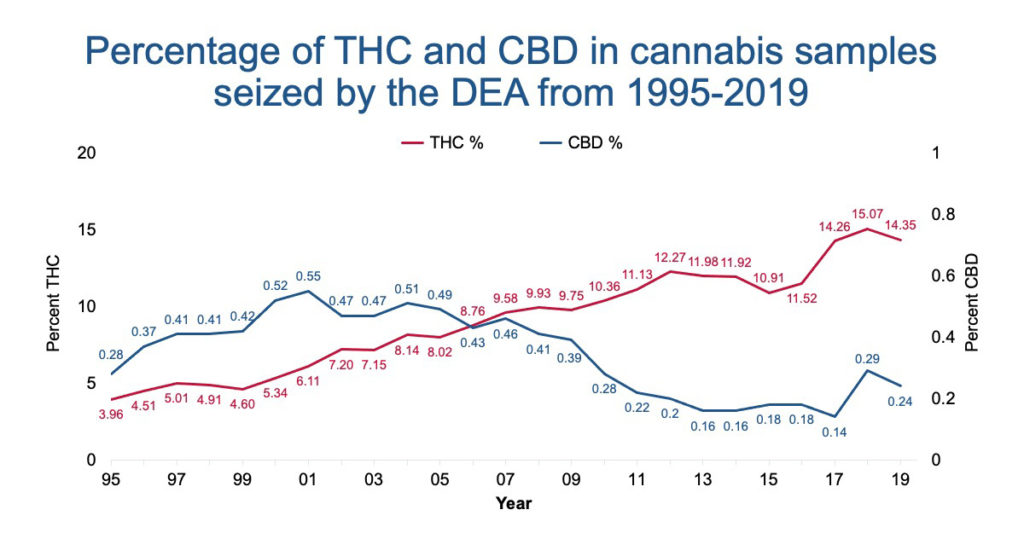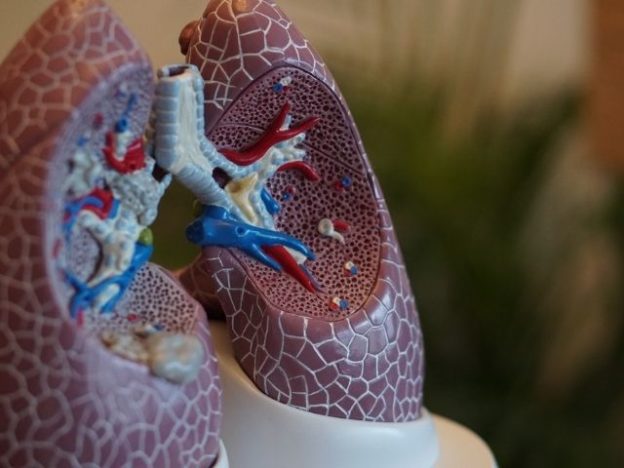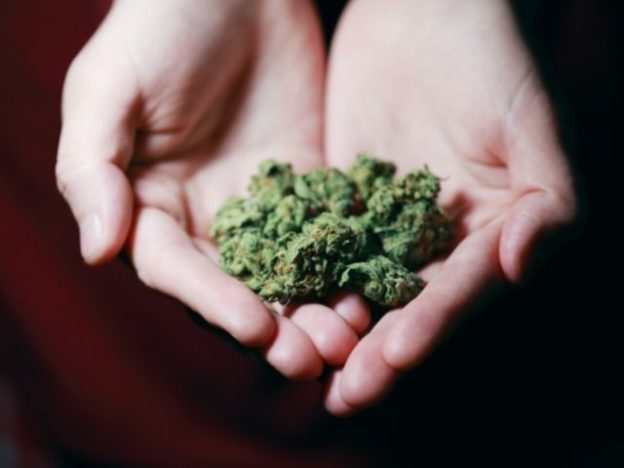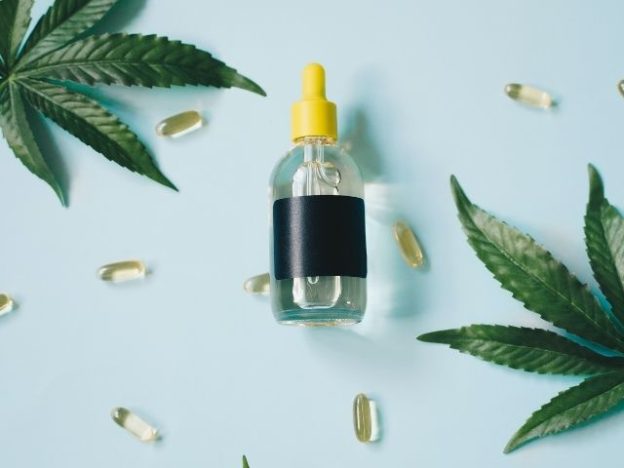As substance abuse counselors who specialize in working with teens, we get a lot of questions about trends in teen drug use. In this article, we’ll dive into the actual drugs that teens are using based on data we have gathered from 281 patient charts between 2020 and 2022.
We gathered data from all the charts from our Arizona substance abuse program over the last three years (2020-2022), representing 281 individuals who have received substance abuse treatment in our program. We found that the number one drug used by teens is marijuana. Most of these young people were also using other drugs at the time of admission, but not all.
So, what is the number one drug used by teens?
Below, is a chart of the top 5 drugs used by teens. Among the top drugs are some of the usual suspects, marijuana, alcohol, xanax, etc. However, we found that 100% of the young people we worked with were using marijuana:
Most common drugs used by teens between 2020 and 2022:
| Substance | 2020 | 2021 | 2022 | Average |
| Marijuana | 100% | 100% | 100% | 100% |
| Alcohol | 92% | 93% | 83% | 90% |
| LSD | 64% | 65% | 57% | 63% |
| Xanax | 63% | 58% | 54% | 59% |
| Cocaine | 44% | 45% | 38% | 43% |
Shown another way:
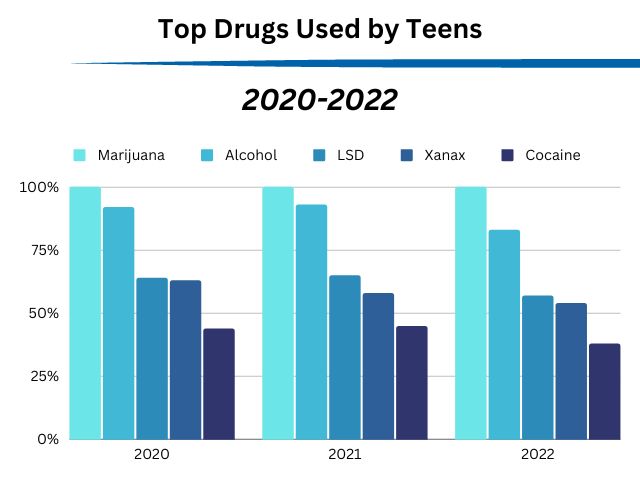
What drugs cause the most problems (substance use disorders) for teens?
Astute readers may observe that the number of teens who have used marijuana being 100% doesn’t necessarily mean that 100% of the young people in our program had a specific problem with marijuana. We felt the same way, so we took a look at the specific substance use disorders treated.
We took a secondary look at the charts from our California substance abuse program to determine what percentage of each drug was responsible for specific substance use disorder diagnoses, and here’s what we found:
Top substance use disorders in teens between 2020 and 2022:
| Substance Use Disorder | Percentage |
| Cannabis | 100% |
| Alcohol | 65% |
| Cocaine | 16% |
| Benzodiazepines | 16% |
| DXM | 9% |
Note that many of the individuals were admitted for more than one substance use disorder. Only 14% of the individuals were treated for cannabis use alone.
In graphic form:
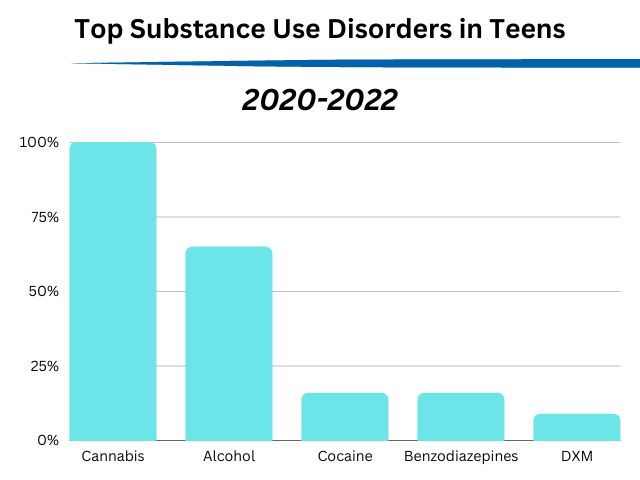
At least in the case of our programs, it appears conclusive that marijuana is the top drug of choice among young people, and it’s also the drug that is responsible for the most substance use disorders, by a long shot.
Alcohol came in second, and we noted that 58% of the young people we treated had both a cannabis use disorder AND an alcohol use disorder.
Though other illicit substances, like prescription pain medications and opiates, are responsible for many of the tragic deaths, their frequency of use didn’t even crack the top five!
The top prescription drug used was benzodiazepines (most frequently Xanax).
What drugs do teens try first?
While the data above seems to be painting a picture, we also gathered the data from our California program on which drugs the teens used first. Taken from the same data set:
Drugs that teens tried first:
| Percentage | |
| Cannabis Alone | 37% |
| Cannabis & Alcohol | 35% |
| Alcohol Alone | 26% |
| All Other Illicit Drugs | 0% |
The most common answer to the question was cannabis (37%), followed by alcohol and cannabis (35%). Not a single drug other than cannabis or alcohol was mentioned as a “first drug” by any young person entering our program.
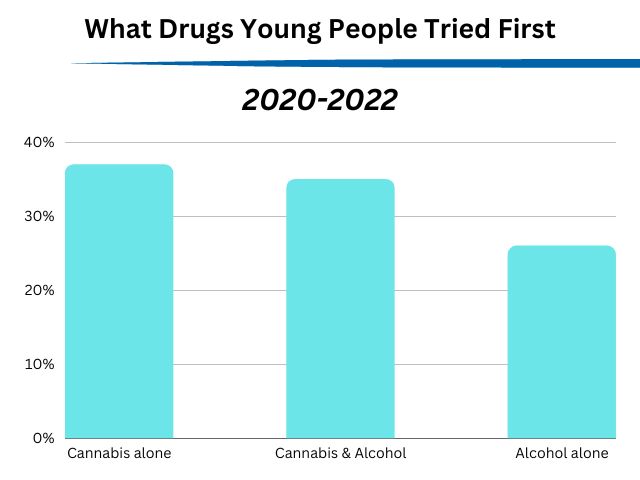
Though the “gateway effect” of marijuana is under constant debate, it seems clear at least that marijuana is the drug that teens most commonly try first.
What about alcohol?
In years past, it wasn’t uncommon for every young person we met to be using alcohol as well as marijuana.
In recent years, this number has declined. Most notably, the number of teens who used alcohol between 2021 and 2022 dropped from 93% to 83%.
In future updates of this article, we will continue to monitor this number to see if the trend continues.
Potential limitations of the data
One thing we want to acknowledge is that this data was collected from young people who entered our substance abuse program. It is, of course, possible that the data would be different if we looked at data for teens who did not require a drug abuse program, then the numbers could look different.
Why is Marijuana so Prevalent Among Teens?
There are several factors that make Marijuana so popular among adolescents, but there are 3 main reasons that stick out among the others:
1. The Perception of Marijuana
The most recent Arizona Youth Survey (2022) data points out that around 49.1% of students between grades 8-12 do not believe that smoking marijuana regularly poses a significant risk.
Marijuana is one of those substances that are often perceived as harmless, and according to an article by the NY Post, about 57% of Americans believe that Marijuana is harmless. Pro-marijuana messaging is everywhere. It can be seen on billboards, on our favorite shows, glorified in music, and it’s all over popular media.
Society, social media, and the Marijuana industry are asserting that marijuana use is safe.
2. Accessibility
Marijuana has become one of the most accessible substances on the market for teens since the rise in concentrated or synthetic marijuana also known as wax pens, carts, and THC vapes.
The legalization of recreational marijuana in many states has caused a rise in accessibility, and teens may find it easier to purchase than alcohol. However, even in states where marijuana is still illegal, teenagers can purchase it through their friends, dealers, and even through social media.
The rise of online sales has also opened up avenues for teens to purchase through social media, without much difficulty. With its social acceptance and easy accessibility, it is concerning how easily teens can obtain marijuana without any safety measures in place and the effect that it may be having on teen drug abuse.
3. Peer Pressure
Peer pressure is one of the biggest factors that contribute to the popularity of drug and alcohol use among teens and young adults. Many young people feel the need to fit in with their peers and may use THC or other illicit substances as a way to do so. Being part of a group that abuses drugs, especially marijuana can give teens a sense of belonging and can help them to feel accepted.
This kind of pressure can also be harmful, as it can lead to drug use becoming a regular part of their lives, even if they know it is not good for them.
Further reading on the risks of marijuana use
In recent years, we have seen the dangers posed by the consistent use of Marijuana:
- Hyperemesis
- Marijuana-induced psychosis
- Exaggerated Mental health issues
- Substance Use Disorders
- The effect of marijuana on the teen brain
Because teenagers’ brains aren’t fully developed, it can cause long-term consequences such as:
- Problems in the development of the prefrontal cortex – causing problems with emotional regulation
- Impaired cognitive abilities
Summary
Our data shows that marijuana is the most commonly used drug among teenagers in the United States. The prevalence of marijuana use among teenagers has been on the rise in recent years.
It is important to address substance use among teens through education, prevention, and early intervention programs. Parents, educators, and healthcare providers play key roles in helping teens make informed decisions about drug use and seeking treatment if necessary.






